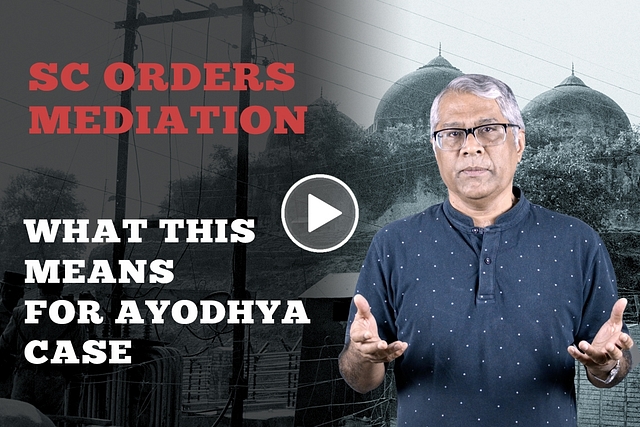
[Watch] Mediation In Ayodhya Case: Four Things To Note As We Get Set For May Verdict
Transcript:
The Supreme Court Bench which is hearing the Ayodhya case, today (8 March 2019) mandated mediation, compulsory mediation.
A three-member panel headed by a former Supreme Court judge, F M Kalifulla, has two more members on it – one is Sri Sri Ravi Shankar, and the other is Sriram Panchu, who is an expert in arbitration and mediation.
They have been asked to finish the job in eight weeks.
The committee obviously has a very tough job. It has to work out a compromise between people who have been unwilling to compromise.
More important, it has to ensure that the final compromise will actually improve Hindu-Muslim relationships for the better.
If that does not happen, we can expect more litigation, not less.
There are many implications to this decision.
Here’s one. First thing, we are not going to get a verdict on the Ayodhya issue before the Lok Sabha elections.
Eight weeks means that the committee will give its report only by early May or maybe even the second week of May. And the Supreme Court will then have to listen to the mediators and the parties it has spoken to, before it finally gives its verdict.
So the earliest one can expect a verdict is mid-to-end May. Which means the elections will be truly over.
Secondly, we cannot rule out the possibility of further litigation on points of law since many parties have rejected the idea of mediation and may challenge any decision later.
The court cannot refuse to entertain petitions challenging the verdict on the basis of the law.
I mean, we have people like Subramanian Swamy and Asaduddin Owaisi, who have their own views.
Parties which feel the decision is against them, can challenge the mediation.
Third, the Supreme Court clearly is not in favour of a lengthy court battle, and is probably not keen on a judicial verdict on the dispute. Which would have been more final than mediation.
It’s probably hoping that the mediation effort will be successful and spare it the burden of more effort to solve the problem through legal tenets.
Fourth, the appointment of Justice Kalifulla is an indicator, a signal, to the minority community that the verdict will not be biased.
The appointment of Sri Sri Ravi Shankar, who already has a position on Ram Mandir, where feels the mandir (temple) should come up, is doubled-edged.
If he accommodates the minority demands too much, the Hindu side will think of it as a sell-out.
So, the verdict will ultimately have to be in favour of a Ram temple at the Babri spot even while allowing a masjid (mosque) in another area.
This is the only possible compromise that may be acceptable to both sides, even though not everyone might be happy with it.
So, we have to wait till the end of May. We have to keep our fingers crossed till then.